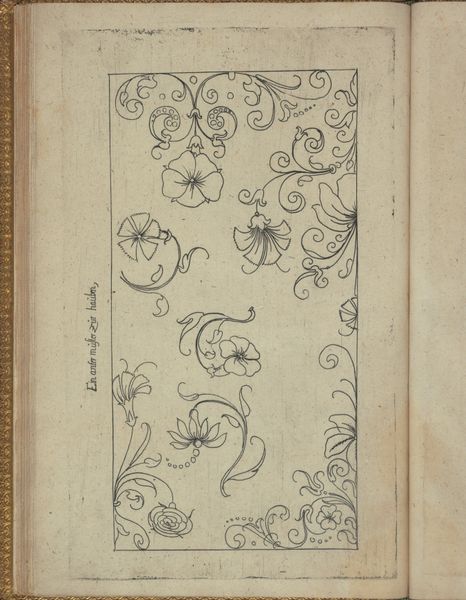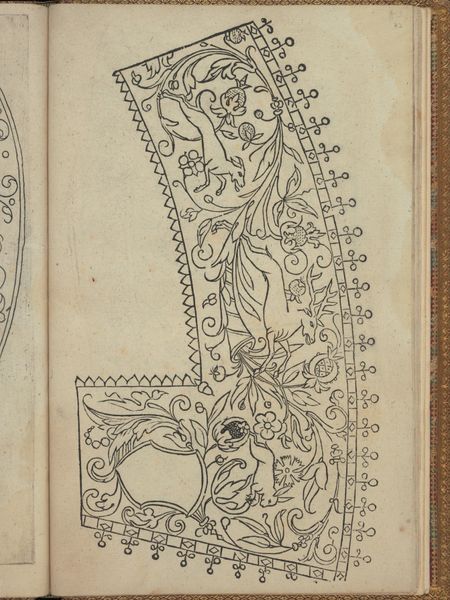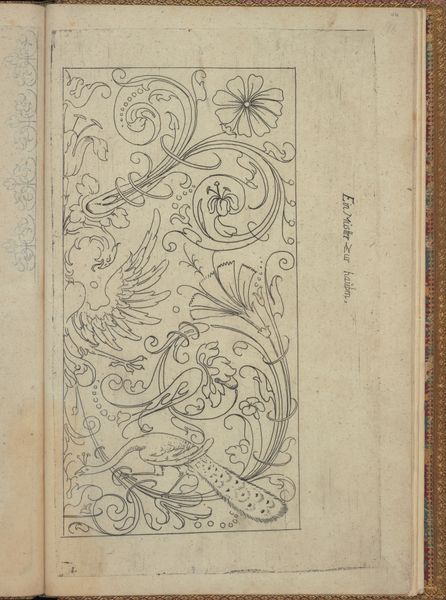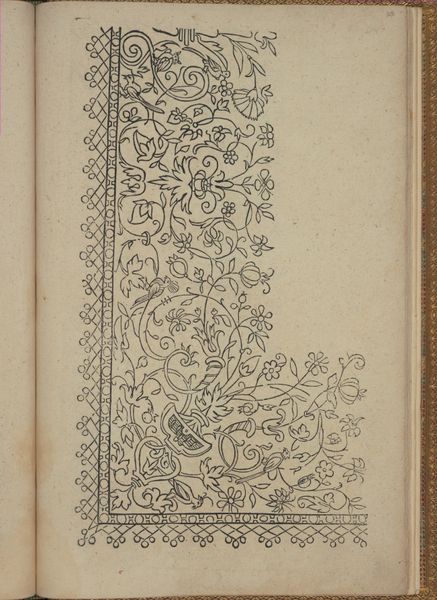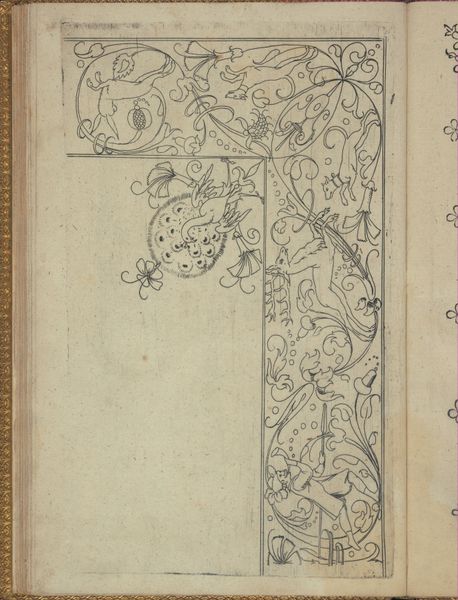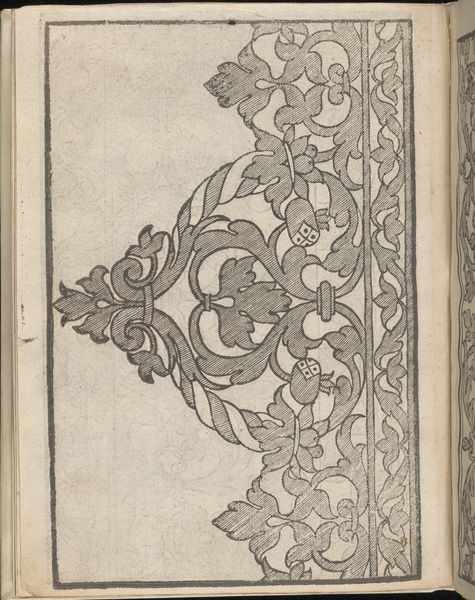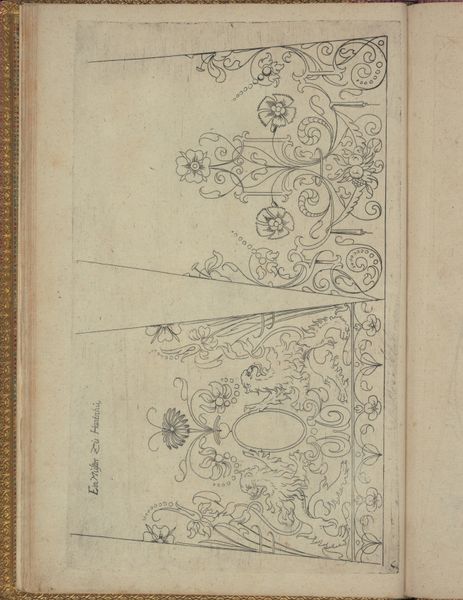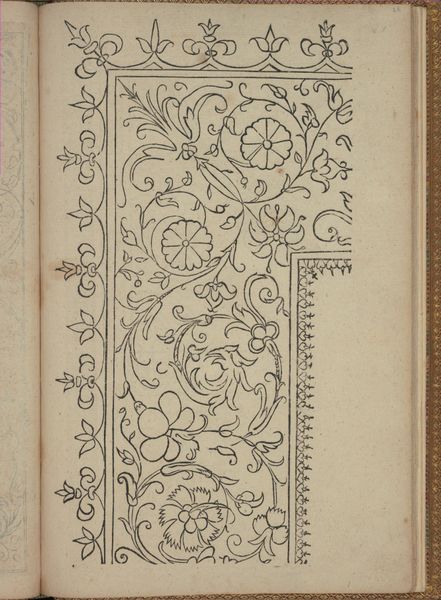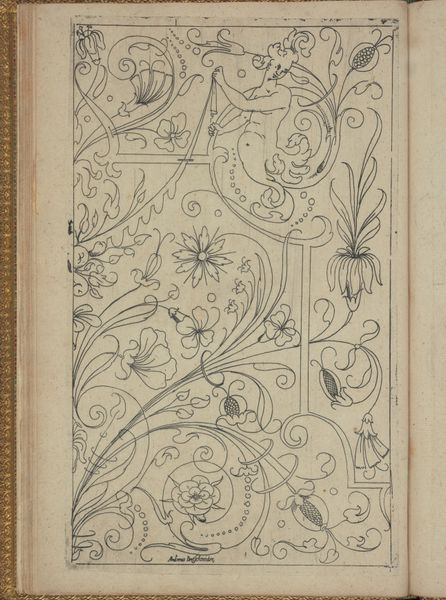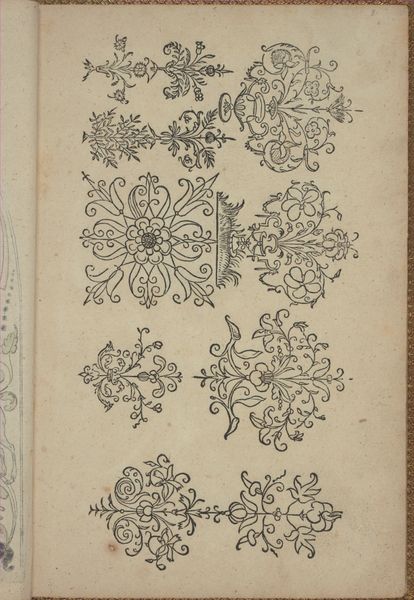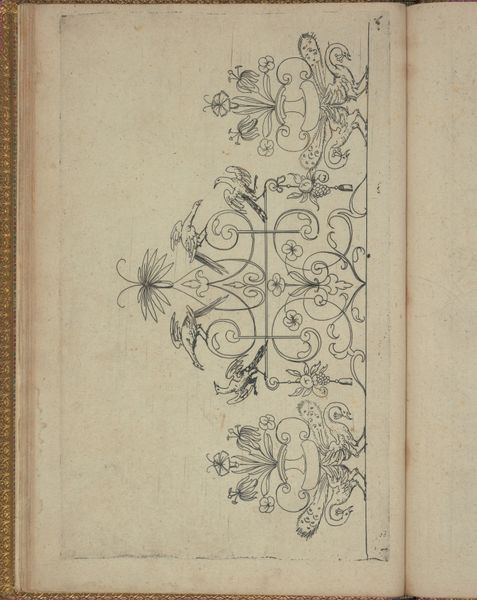
drawing, graphic-art, paper, ink, pen
#
drawing
#
graphic-art
#
book
#
sketch book
#
paper
#
ink
#
geometric
#
pen-ink sketch
#
line
#
pen
Dimensions: Overall: 12 x 8 1/16 in. (30.5 x 20.5 cm)
Copyright: Public Domain
Curator: The work before us, titled "New Modelbüch (Page 20r)," comes from Andreas Bretschneider. This drawing in pen and ink on paper was created around 1615. Editor: It feels like a secret garden blueprint, sketched with such precise lines. A study in botanical motifs. The lightness, the linearity. Curator: Exactly. Model books like this served as compendiums of designs, patterns for artisans working in various media – textiles, metalwork, even architectural decoration. Think of it as a visual vocabulary of the time. The forms signal a shift in design. The geometric structures blend nature and abstraction, with stylized flowers, seed pods, and insect-like forms enclosed within circles. Editor: And those circles…they seem to serve as framing devices, or perhaps stages, for each element to play its part. The artist used an economy of line, stripping each down to its essential form. What about the border running down the right side? The patterns seem simpler there. Curator: The repetition of floral motifs in that border creates a sense of rhythm and order, containing the wilder forms to the left. I think that even something like that suggests how cultural memory functioned, selecting and reiterating certain forms to fix them. Consider the use of cartouches in the central oval shapes. It's more than just decoration, right? They act as focal points. Emblems meant for inclusion of noble arms or significant symbols for institutions perhaps. Editor: I like that. It is like how the architecture would employ such images and geometries on their doorways as if welcoming initiates. Are those crowns integrated with them too? Curator: Yes! Another possible indicator of prestige. Crowns and armorial devices appear often, demonstrating their prominence within 17th century aristocratic culture, serving much like today's symbols for fashion and music are a show of status and recognition of one's place in their community and the world. Editor: It makes one reflect on design’s role – then and now – in defining culture and identity. Curator: Precisely. It prompts me to remember how crucial such portable imagery was for sharing both artisanal knowledge, personal meaning, and collective aspiration at a time before the proliferation of the printed image. Editor: Well, I know I will have to study that for some time before the deeper connections come alive. Curator: Indeed! A beautiful reminder to find symbolic language embedded around you, guiding you to something essential that connects the current present to historical and potentially future consciousness.
Comments
No comments
Be the first to comment and join the conversation on the ultimate creative platform.
